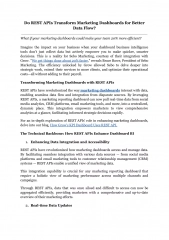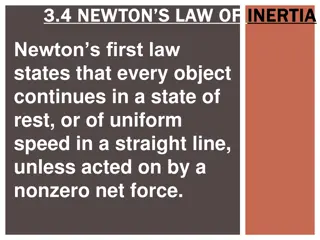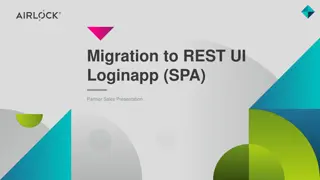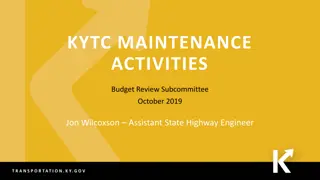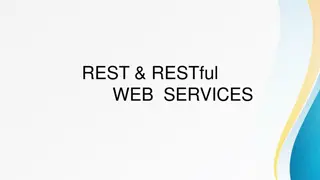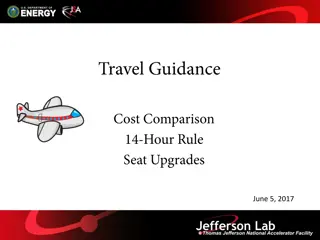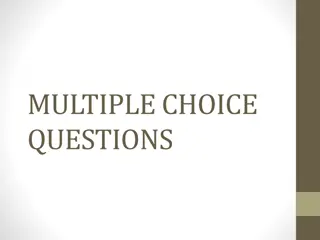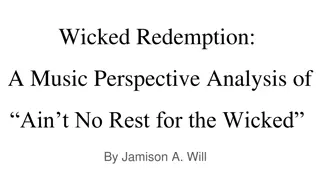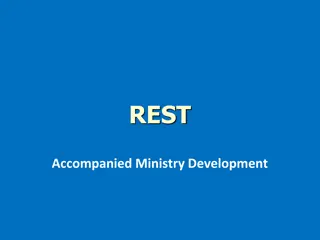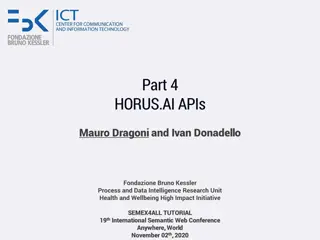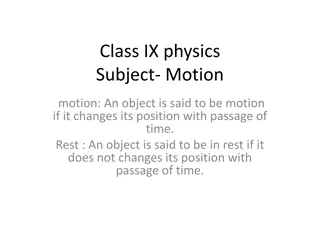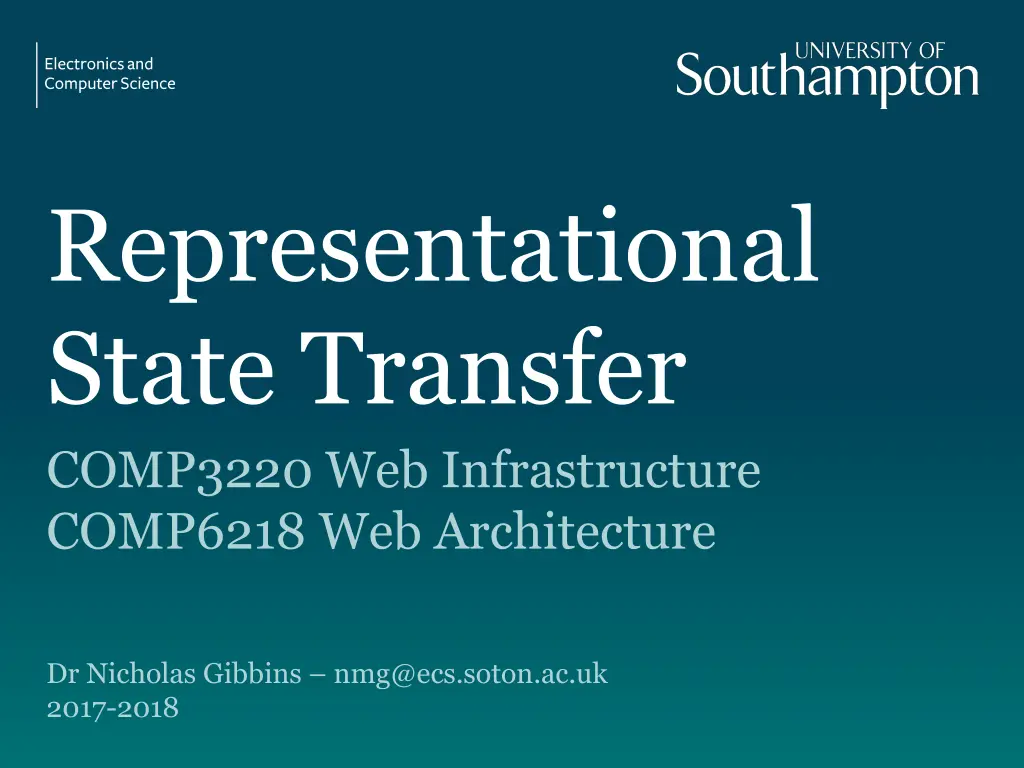
REST Architecture Principles & Constraints
"Learn about Representational State Transfer (REST) architecture principles and constraints, including client-server separation, statelessness, caching, and uniform interface, as defined by Dr. Nicholas Gibbins. Understand how these principles shape web development for improved scalability, reliability, and visibility of interactions."
Download Presentation

Please find below an Image/Link to download the presentation.
The content on the website is provided AS IS for your information and personal use only. It may not be sold, licensed, or shared on other websites without obtaining consent from the author. If you encounter any issues during the download, it is possible that the publisher has removed the file from their server.
You are allowed to download the files provided on this website for personal or commercial use, subject to the condition that they are used lawfully. All files are the property of their respective owners.
The content on the website is provided AS IS for your information and personal use only. It may not be sold, licensed, or shared on other websites without obtaining consent from the author.
E N D
Presentation Transcript
Representational State Transfer COMP3220 Web Infrastructure COMP6218 Web Architecture Dr Nicholas Gibbins nmg@ecs.soton.ac.uk 2017-2018
Representational State Transfer Original design for the Web did not have a formal architecture Network issues with early HTTP (0.9/1.0) affected scalability Nature of application interactions on the Web changed (images, etc) Limited support for shared caching Architectural style that parallels and informs the design of HTTP/1.1 Described in a thesis by Roy Fielding (Day Software, co-founder of the Apache Software Foundation, co-author of HTTP and URI RFCs)
REST Constraints 3
Constraints Client-Server Separation of concerns: user interface (client) data storage (server) +Improves portability of user interface +Improves scalability by simplifying server +Allows components to evolve separately
Constraints Stateless Each request from client to server must contain all of the information necessary to understand the request No context is stored on the server Session state is kept entirely on the client +Improves visibility (can consider each request in isolation) +Improves reliability (easier to recover from partial failures) +Improves scalability (reduces server resource usage) -Increases per-interaction overhead 5
Constraints Caching Response data must be labelled as cacheable or non-cacheable If cacheable, client may reuse response data for later requests +Allows some interactions to be eliminated +Reduces average latency of interactions -Stale data reduces reliability 6
Constraints Uniform Interface Uniform interface between components Identification of resources Manipulation of resources through representations Self-descriptive messages Hypermedia as the engine of application state (HATEOAS) +Improves visibility of interactions +Encourages independent evolvability -Degrades efficiency (depending on optimisation) 7
Constraints Layered System System components have no knowledge of components beyond those with which they directly interact Encapsulate legacy services Introduce intermediaries +Limits system complexity +Improves scalability (load balancing) -Adds latency and overhead (offset by caching) 8
Constraints Code on Demand (optional) Client functionality extended by downloading and executing code Applets Scripts +Improves extensibility -Reduces visibility 9
Architectural Elements 10
Data Elements Resources, Identifiers, Representations URIs, HTML, etc Representation metadata Media type, Last-Modified Control data If-Modified-Since, Cache-Control
Components Origin server Definitive source of resource representations Web server: Apache, nginx, IIS, etc Gateway Intermediary selected by origin server Proxy Intermediary selected by client User agent Browser: Chrome, IE, Safari, Firefox, etc 12
Connectors Client: libwww, etc Server: libwww, Apache API, etc Cache: local or shared (c.f. Akamai) Resolver: Bind/DNS, DDDS Tunnel: HTTP CONNECT + SSL/TLS, SOCKS 13
Further Reading Architectural Styles and the Design of Network-based Software Architectures (Ch 4-6) http://www.ics.uci.edu/~fielding/pubs/dissertation/top.htm 14
RESTful Web Services 15
REST beyond the Web architecture Traditional Web Services based on W3C Web Services Architecture (+WS-I, etc) SOAP, WSDL, UDDI, etc REST based on W3C Web Architecture Apply the REST constraints to the design of Web Services Better fit between the two architectures
The Richardson Maturity Model Model of RESTful maturity REST constraints made concrete, in context of Web technology stack Hypermedia HTTP URI 17
Level Zero Single well-known endpoint Uses HTTP as a transport only Hypermedia No hypermedia HTTP URI 18
Level Zero in Practice XML-RPC Most SOAP services POX 19
POX: Plain Old XML over HTTP Use HTTP POST to transfer XML documents between systems SOAP-like, without SOAP headers, etc Platform independent Uses HTTP as a transport protocol, not an application protocol HTTP metadata is ignored 20
Level One Multiple endpoints Uses HTTP as a transport only (single verb) Hypermedia No hypermedia HTTP URI 21
Templates and Tunnelling URI templates http://restbucks.com/order/{order_id} URI tunneling Use GET for safe/idempotent operations Use POST otherwise Map existing method parameters to URI query parameters http://restbucks.com/PlaceOrder?coffee=latte&size=large 22
URI Tunnelling Sometimes Web-friendly Multiple URIs used to name resources (Sometimes) correct use of GET but URIs used to encode operations, rather than identify resources Use of GET for non-safe operations breaches Web Architecture principle of Safe Retrieval 23
Level Two Multiple endpoints, identifying resources Hypermedia Understands HTTP (multiple verbs) No hypermedia HTTP URI 24
Mapping CRUD to HTTP Operation HTTP Verb Create POST to a URI, creates new subordinate resource Read GET, returns representation Update PUT, providing new representation Delete DELETE, removes resource 25
Level Three Multiple endpoints, identifying resources Hypermedia Understands HTTP (multiple verbs) Uses links to communicate protocols (shared state) HTTP URI 26
HATEOAS Hypermedia as the engine of application state Resource representations include links to related resources Links that represent a transition to a possible future state of the current resource Link types used to indicate operations (HTTP verbs) that may be used on the indicated resources State transitions constitute application protocol 27
Next Lecture: REST in Practice

